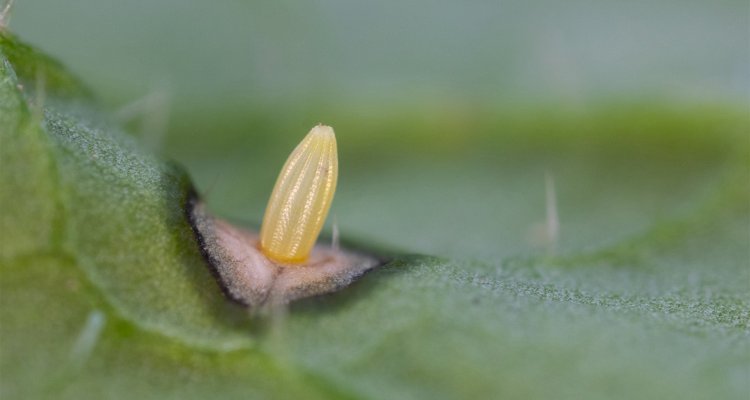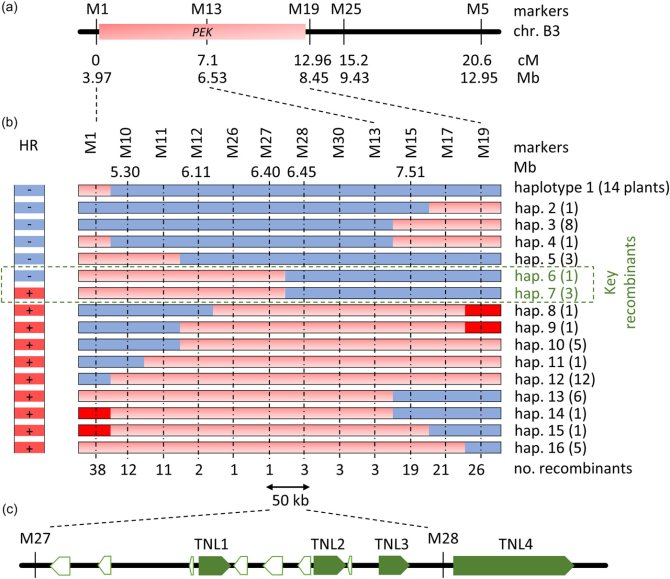
Project
Evolutionary genomics of insect egg-killing by plants
In nature, plants are in a continuous arms-race with their enemies which has led to an enormous diversity in immune receptor genes. We investigate the genomic and evolutionary defense mechanisms that lead to the death of butterfly eggs both in wild plants and cultivated plants and how butterflies counter-adapted to them. This project contributes to novel tools for breeding resistant cultivars.
Background
Agricultural ecosystems are composed of modern, high-yielding crop populations with low genetic diversity making them susceptible to insect pest and pathogen outbreaks. Even when initially resistant to pests, through evolutionary adaptations, plant attackers quickly evolve ways to overcome crop resistances. The integration of evolutionary mechanisms of plant-attacker arms-races is therefore a necessary step in breeding of durable resistant crops. However, mechanisms for recognition of herbivorous insects in plants are largely unexplored and so far, under-utilised.
A plant weapon that efficiently targets the onset of herbivory is the killing of insect eggs. Egg deposition on leaves can trigger localised hypersensitivity(HR)-like cell death eventually leading to egg mortality.
This project sheds light on the evolutionary arm-races between plant receptor genes and corresponding ligands by pest insects, thereby contributing to our understanding on plant immune recognition of herbivores. Unravelling the genomic mechanism of egg-killing will help to utilise durable resistance in cultivars by marker selected breeding against herbivory.
Project description
This project aims to elucidate the evolutionary and genomic mechanism of an arms-race between the mustard family including cabbage crops and its important pests, cabbage white butterflies. We want to characterise plant immune receptor genes involved in egg-killing, explore natural variation therein across populations of wild and domesticated plants, and examine the evolutionary origin of the egg-killing receptor gene in the mustard family. On the insect side, we want to identify ligands that bind to receptors, examine how such genes evolved in butterflies and how butterflies counter adapted to circumvent egg-killing. The current wealth of affordable sequencing techniques and genome-editing tools allow studying this arms-race on a (phylo)genomic level.
Results
We discovered a single dominant plant locus involved in egg-killing cell death consisting of intracellular immune receptor gene clusters, likely co-opted from pre-existing immunity responses against pathogens.

Publications
-
A butterfly egg-killing hypersensitive response in Brassica nigra is controlled by a single locus, PEK, containing a cluster of TIR-NBS-LRR receptor genes
Plant, Cell & Environment (2024), Volume: 47, Issue: 4 - ISSN 0140-7791 - p. 1009-1022. -
Hypersensitive-like response in Brassica plants is specifically induced by molecules from egg-associated secretions of cabbage white butterflies
Frontiers in Ecology and Evolution (2023), Volume: 10 - ISSN 2296-701X -
Genetic analysis reveals three novel QTLs underpinning a butterfly egg-induced hypersensitive response-like cell death in Brassica rapa
BMC Plant Biology (2022), Volume: 22, Issue: 1 - ISSN 1471-2229 -
Insect egg-killing : a new front on the evolutionary arms-race between brassicaceous plants and pierid butterflies
New Phytologist (2021), Volume: 230, Issue: 1 - ISSN 0028-646X - p. 341-353.